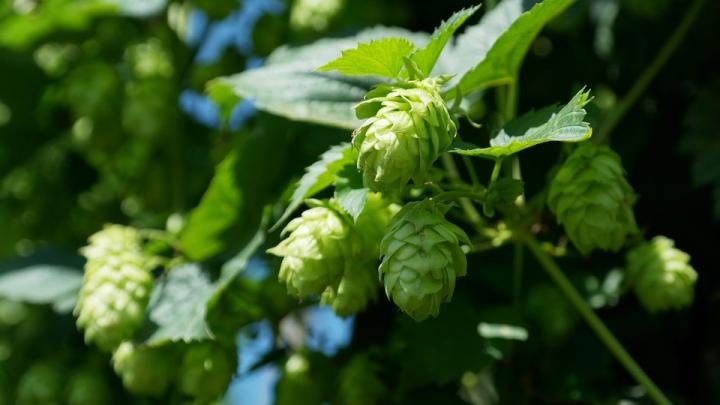
Credit: Oregon State University
CORVALLIS – The plant that adds flavor, color and bitterness to beer also produces a primary compound that thwarts cancer cells, and two important derivatives of the compound do as well, new research at Oregon State University shows.
Unlike the primary compound, xanthohumol, known as XN, the derivatives don’t metabolize into phytoestrogens. Phytoestrogens are plant-based chemicals similar to female sex hormones that help some types of tumors grow and can cause other health problems as well.
The research showed, for the first time, that the derivatives have cancer-fighting effectiveness similar to that of XN in liver and colon carcinomas. That means the two non-estrogenic derivatives are attractive alternatives for testing, along with XN, in future preclinical studies..
The study was published in the International Journal of Molecular Sciences.
Xanthohumol is produced by humulus lupulus, the common hop plant. More than 20 years ago, researchers discovered that XN inhibits cell growth in a variety of cancer cell lines.
“But a potential problem with XN is that enzymes in the liver and the gut microbiota metabolize it into 8- prenylnaringenin, or 8-PN, the most potent phytoestrogen known,” said the study’s corresponding author, Adrian Gombart, professor of biochemistry and biophysics in the College of Science at Oregon State University and principal investigator at OSU’s Linus Pauling Institute.
The derivatives that don’t metabolize into 8-PN are DXN, short for dihydroxanthohumol, and TXN, which refers to tetrahydroxanthohumol.
Earlier, Gombart’s Linus Pauling Institute colleague and co-author Fred Stevens led a study into DXN and TXN’s effects on metabolic syndrome.
“In that previous research we showed that the two derivatives reduced weight gain and improved biomarkers of metabolic syndrome,” Gombart said. “XN had been shown to inhibit proliferation of a variety of cancer cell lines, and in this study, we demonstrated XN’s ability to halt cell growth and kill two liver cancer cell lines and two colon cancer cell lines. We tested liver and colon cancer cell lines because oral consumption of XN and its derivatives can lead to high concentrations in the gut and liver.”
Colorectal cancer is the third most common cause of cancer-related death in the United States, and liver cancer ranks fifth. The incidence of liver cancer, though, has tripled in the last four decades.
“For both of those cancers, discovering new compounds for prevention and treatment is imperative,” Gombart said. “In all the cell lines tested, DXN and TXN inhibited cell growth and caused cell death, as did XN. And for most cell types, DXN and TXN were slightly more potent.”
###
Supporting the research were the National Center for Complementary and Integrative Health at the National Institutes of Health; Hopsteiner Inc.; the Buhler-Wang Research Fund; the OSU Department of Biochemistry and Biophysics; and the Linus Pauling Institute.
Collaborating with Gombart were OSU colleagues Stevens, Isabelle Logan, Cristobal Miranda, Malcolm Lowry and Claudia Maier.
Media Contact
Adrian Gombart
[email protected]
Original Source
https:/
Related Journal Article
http://dx.




